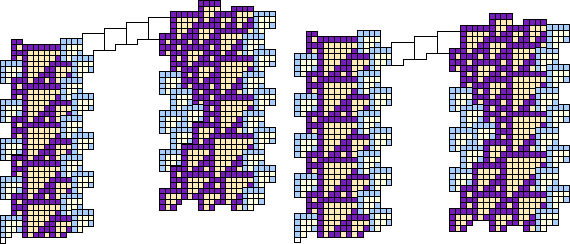 |
| F high | F low | |
| C1 | EBar + C2 | F + C1 |
| C2 | F + C1 + BBar | F + C1 + BBar |
| C3 | C1 + C2 | F + C2 + BBar |
 |
C gliders are static with period 7, while F gliders move left 4 every 36 generations, for a velocity of -1/9. Thus an F glider falls by one cell relative to the C chain, while coming 4 cells closer, every time it runs through its period.
Since the two gliders must be separated by an integral number of ether tiles, and there are two phases of ether tile which abut on the right side of a C, there are essentially two relative alignments for an F and any C.